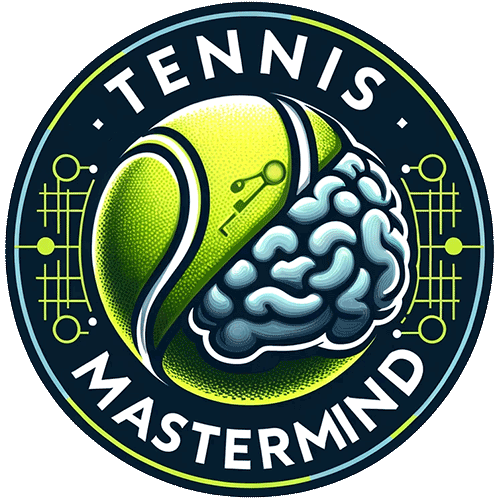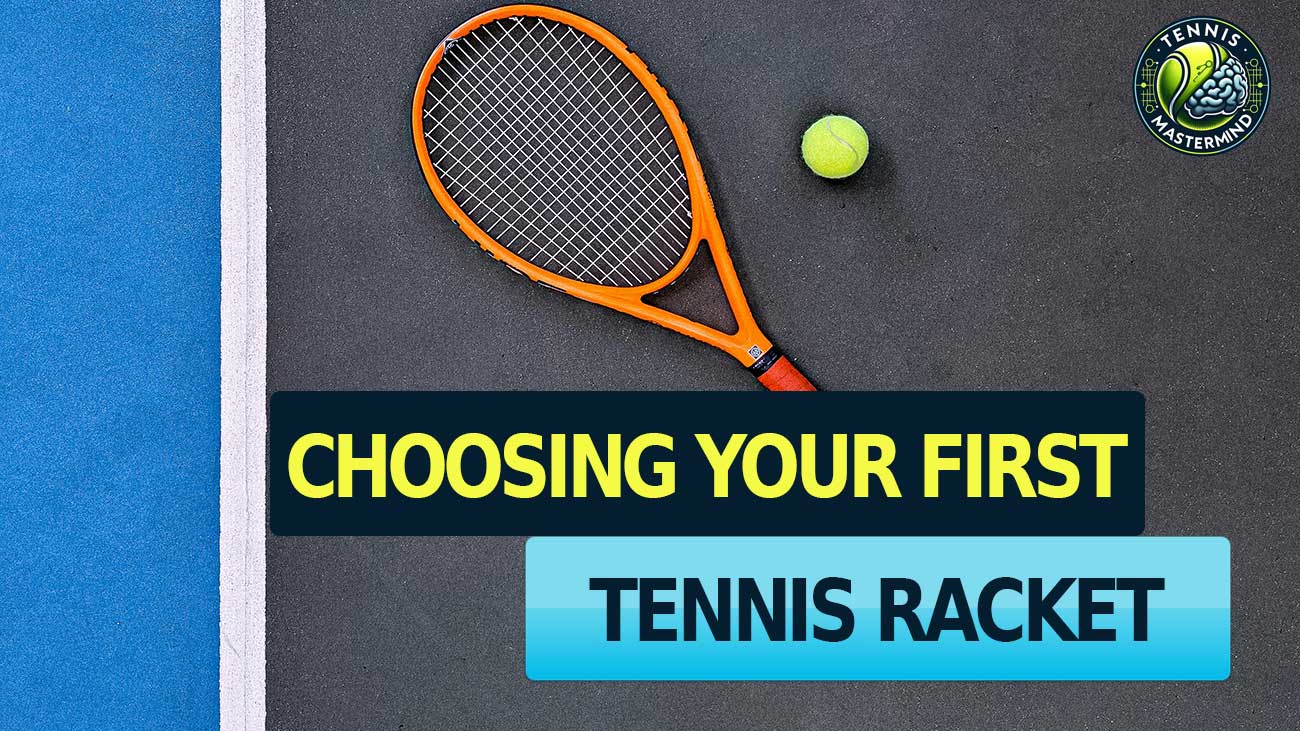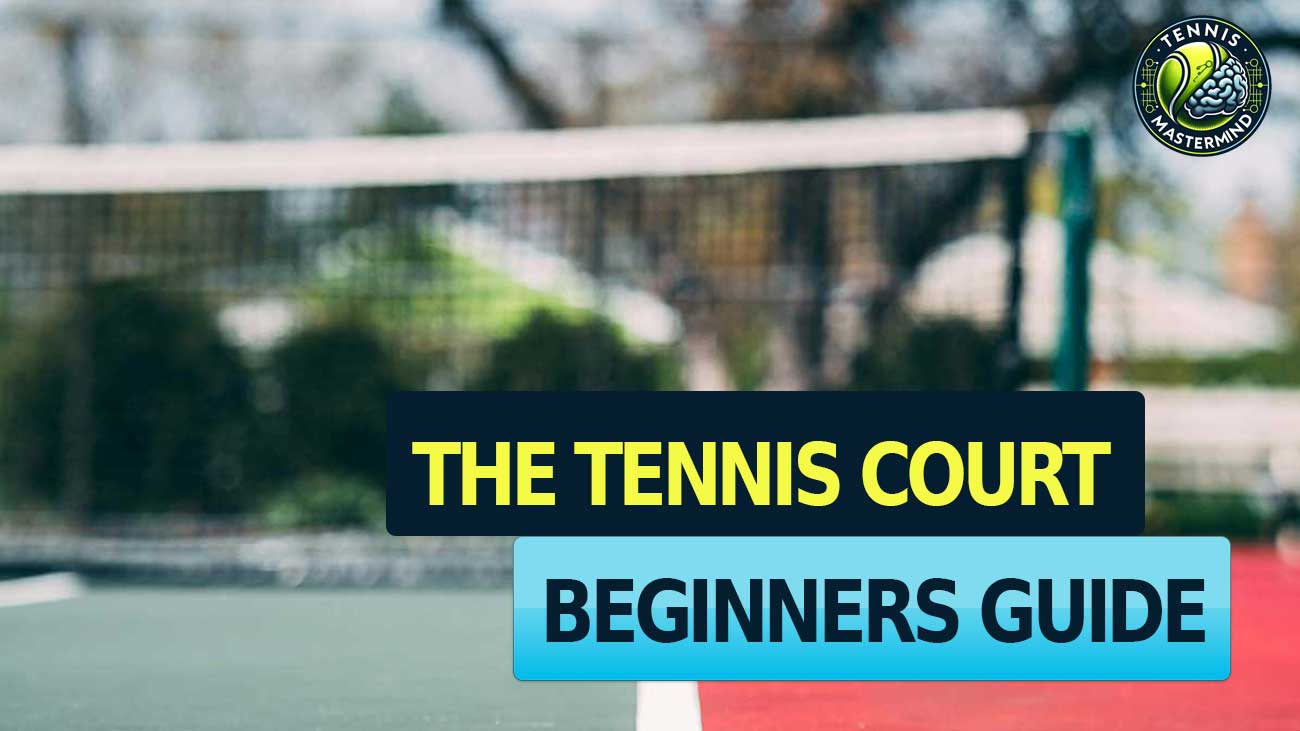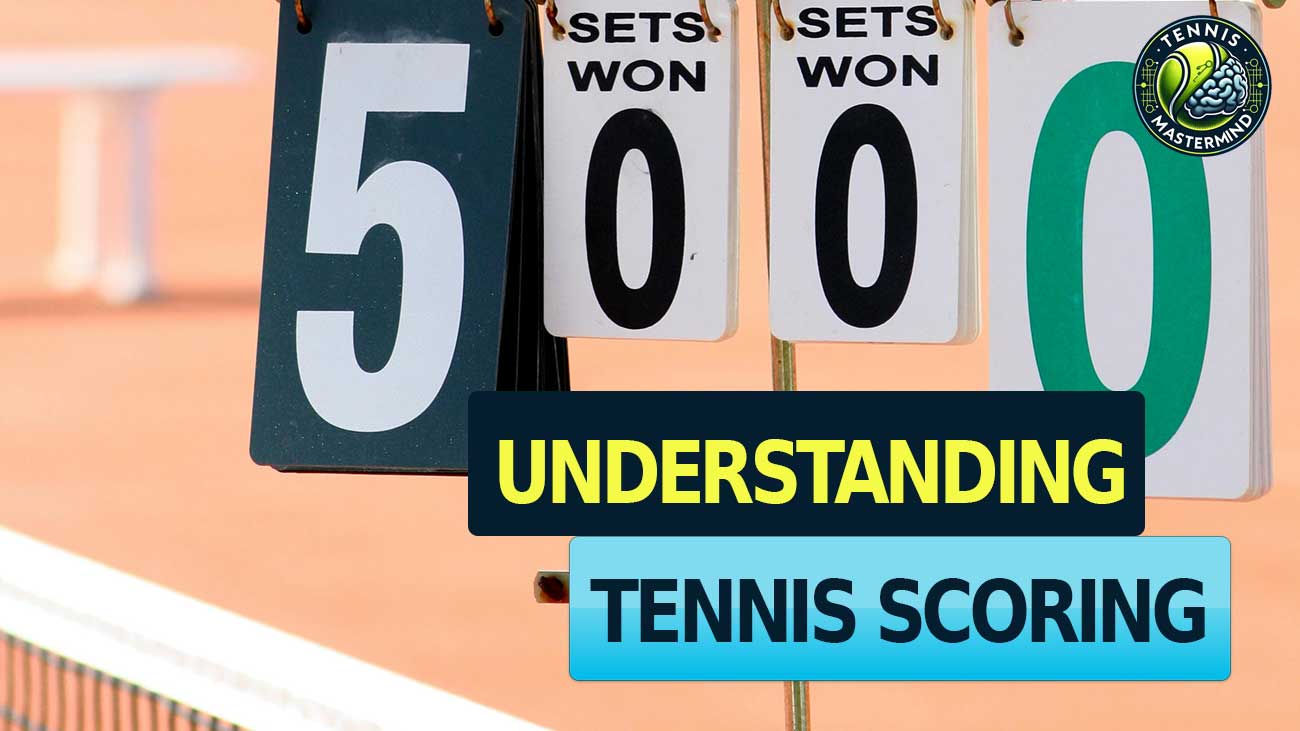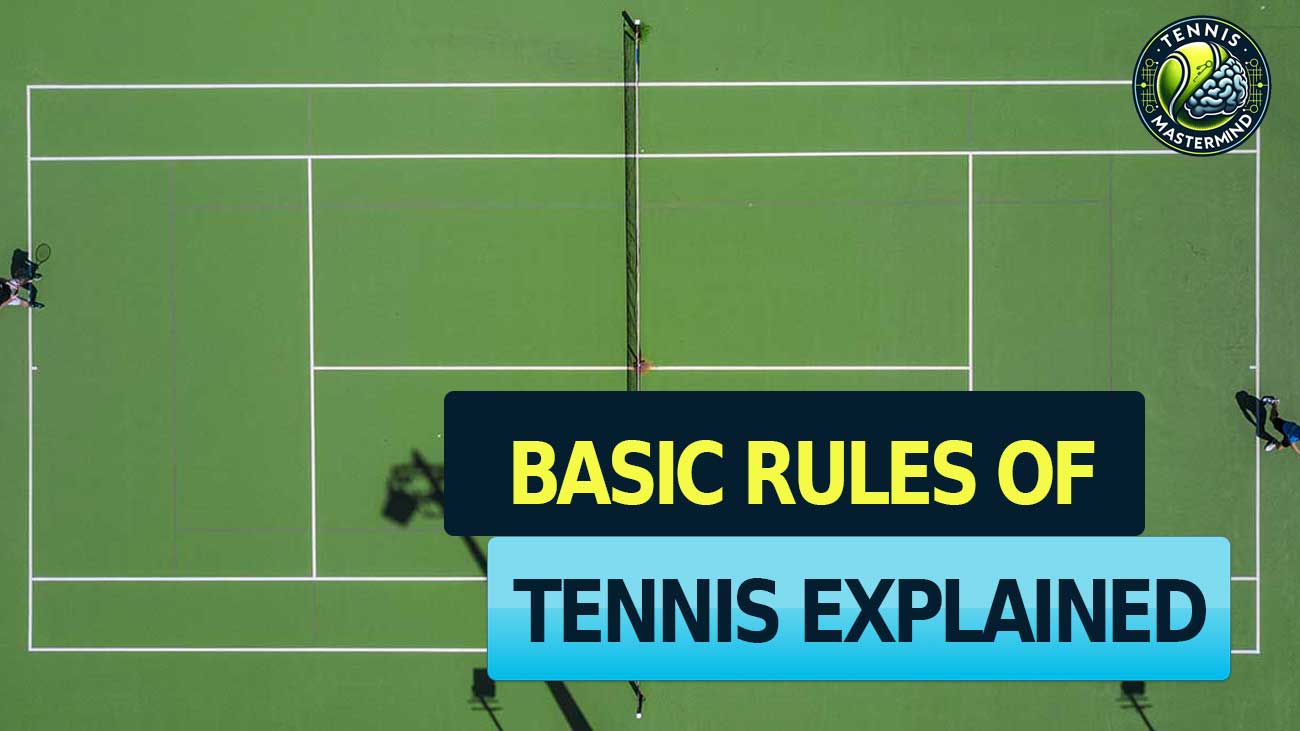Deciding on your first tennis racket can feel like a huge task. Most tennis rackets are designed for specific playing benefits. This article will guide you through choosing the perfect fit, considering factors such as head size and weight to match your skill level.
Let’s dive in—and find that game-changer for you!
Key Takeaways
- Your first tennis racket should match your strength and playing style, with beginners benefitting from bigger head sizes for more power and lighter rackets for ease of handling.
- Grip size is important for comfort and control during play; grip sizes vary from 0 to 5, making it easier to find a perfect fit.
- The string pattern influences your game by offering either more control with tight patterns or more power with looser ones. Consider this alongside the balance of the racket, where balanced or head-heavy options are usually better for beginners.
- Frame stiffness affects how much energy returns to the ball; stiffer frames add power but less control, while flexible frames offer more precision at the expense of some power.
- When starting in tennis, focusing on basics like proper grip, stance, and basic strokes can significantly enhance performance along with choosing a racket that complements these skills.
The Importance of Choosing the Right Tennis Racket
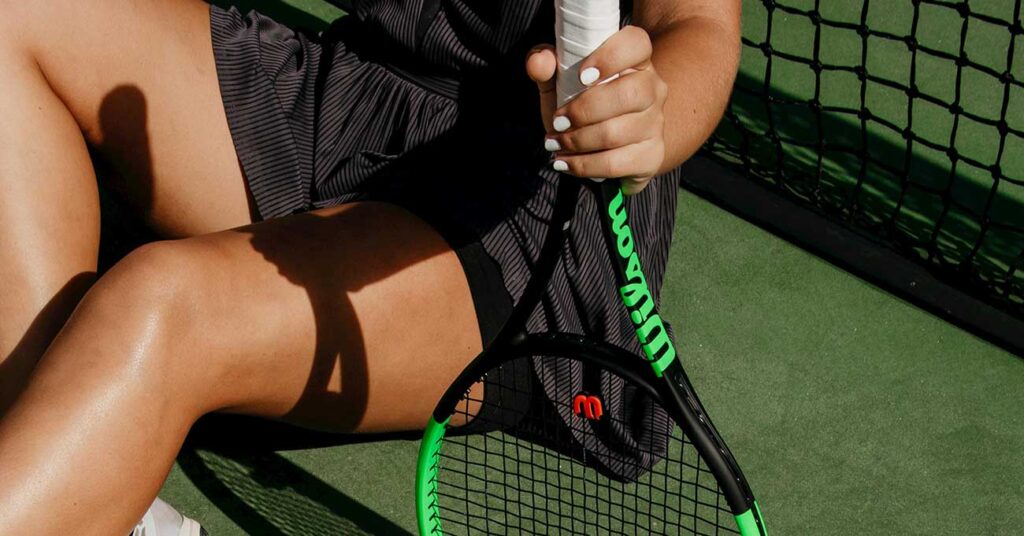
Choosing the right tennis racket can make a big difference on the court. A good match between player and racket enhances every swing, serve, and volley. It’s not just about feeling comfortable; it’s about playing your best game.
With the correct racket, beginners find it easier to hit the sweet spot, making their learning curve less steep.
Head size and weight play key roles in this choice. Larger head sizes offer more power and forgiveness for new players. Lighter rackets help with quicker adjustments during fast-paced games.
For every tennis player, finding that perfect balance of weight, head size, and grip size is crucial for improving techniques from baseline lobs to high-powered serves. This isn’t just equipment—it’s part of your team on the court.
Factors to Consider When Buying Your First Tennis Racket
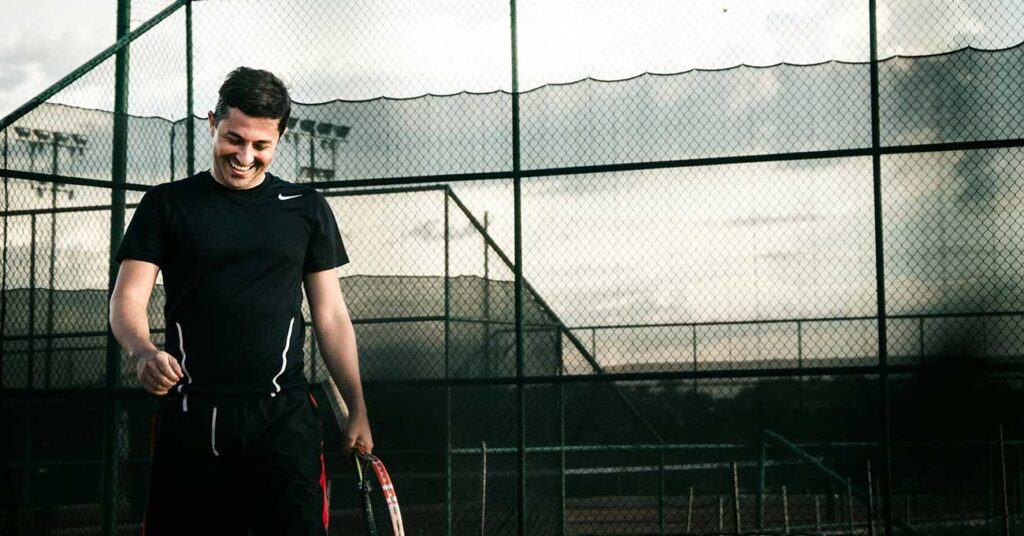
Picking your first tennis racket might feel overwhelming, but it’s all about knowing what to look for. Keep in mind, the best racket for you depends on how it complements your style and boosts your game on the court.
String Pattern
The string pattern on a tennis racket is crucial for power and control. Tighter patterns provide more control, letting advanced players hit with precision. Looser patterns boost power—great for beginners who need extra oomph in their shots.
Think of it as the racket’s fingerprint; unique and defining its character.
Choosing the right string pattern may seem daunting but remember, it shapes your game. Beginners often thrive with a looser setup, easing ball strikes. Advanced players seek tighter strings for better shot manipulation.
Next up, let’s talk about weight and how it impacts your play style.
Weight
Adult tennis racquets typically weigh between 9 and 12 ounces. Lighter rackets are easier to handle, making them a great choice for beginner tennis players. They allow for quicker movements on the tennis court.
On the other hand, heavier rackets offer more power and stability during play. This helps in hitting the ball harder without exerting extra effort.
Choosing the right weight depends on your physical strength and playing style. Some players prefer the agility that lighter racquets provide, while others benefit from the control of heavier options.
Next up, let’s talk about racquet length and how it impacts your game.
Racquet Length
Racquet length is key for players of all skill levels. Longer racquets offer more reach and power, making them a good choice for players who want to hit the ball harder without swinging faster.
They can also give a bigger serve. However, they might be harder to control than shorter racquets.
Beginners should think about starting with a standard-length racquet. This size helps with balance and control as you learn the game. A too-long racquet can make it tough for newcomers to get used to the sport’s movements and could lead to developing bad habits in their swing technique.
Tweener racquets strike a nice balance between power and control, often appealing to those still finding their footing in tennis basics.
Frame Size
After considering racquet length, it’s crucial to think about frame size. Frame size impacts power and control—larger frames offer more power but less control. This makes choosing the right frame size a balancing act.
Beginners often benefit from a larger frame, offering them extra help with their swings.
Frame sizes vary to fit different playing styles and strengths. Lighter frames improve maneuverability, while heavier ones provide more stability and shock absorption upon impact with the ball.
Your palm should guide you in finding a comfortable grip, making it easier to handle the racket during play. It’s all about what feels best in your hand and suits your style on the court.
Head Size
Head size plays a big role in how your tennis racket performs. A larger head gives you more power and makes it easier to hit the ball. This is great for beginners who are still working on hitting the ball consistently.
On the other hand, a smaller head size offers more control and precision, perfect for advanced players who know exactly where they want their shots to land.
Choosing the right head size requires some thought about your skill level and what you hope to achieve on the court. Beginners should lean towards rackets with a larger head size for that extra forgiveness during play.
As you get better and aim for more precise shots, consider transitioning to a racket with a smaller head size to gain better control over your game.
Grip Size
Moving from head size, to grip size becomes our next focus. It’s crucial because it determines how comfortable you’ll feel holding your racket during play. Grip sizes range from 0 through 5, or in U.S. measurements, from 4 1/4 to 4 5/8 inches.
This measurement matches the distance between the tip of your ring finger and a specific line in your palm. Choosing the right one ensures that you can control your shots better without straining your hand.
You can also adjust the grip size slightly with an overgrip to enhance comfort if it’s not perfect on the first try. A well-fitted grip aids in preventing blisters and ensures that long matches don’t turn into a battle with discomfort rather than focusing on technique and strategy.
Balance
Balance in a tennis racket is all about how the weight is distributed. Think of it as a seesaw. Some rackets have more weight at the head, making them head-heavy. Others carry more weight in the handle, known as headlight.
And then, some distribute the weight evenly for a balanced feel.
Choosing the right balance can transform your game. Head-heavy rackets give you extra power on swings without needing too much arm strength—they’re great for players who stay at the baseline and hit hard.
On the other hand, head-light rackets offer better control and are easier to maneuver, perfect for net play and quick volleys. It’s crucial to pick a racket that complements your style of play to improve both comfort and performance on the court.
Tension
Tension in a tennis racket refers to how tight the strings are pulled. High tension gives you more control over your shots, making it easier to hit the ball where you want. On the other hand, lower tension boosts power by giving the ball more bounce off the racket.
Players often choose their string tension based on personal preference and playing style. Beginners might start with lower tension for extra power, while advanced players opt for higher tension for precise shot control.
Choosing the right tension is crucial—it influences your game’s feel and performance. Many players experiment with different tensions to find what works best for them. Remember, adjustments can always be made to better match your evolving skills and techniques on the court.
Stiffness
Stiffness in a tennis racket, known as the RA rating, plays a huge role in how your shots feel and behave. A higher stiffness means the racket gives more power back to the ball. This can be great for players who want to hit harder without needing extra swing effort.
On the other hand, a lower flex—meaning less stiffness—offers better control and might be easier on your arm. It’s like choosing between a trampoline that launches you high with every bounce or one that offers a softer, controlled rebound.
For beginners, finding that balance is key because it affects not just performance but also comfort during play. Rackets with moderate stiffness often provide a good mix of power and control, helping new players develop their skills without strain.
Next up: understanding racket technology moves us into how these features work together for game-winning potential.
Understanding Racket Technology
Racket technology has taken giant strides in recent years, making tennis more exciting and accessible.
Whether you have a modern swing or stick with traditional shots, this technology adapts to improve your performance on the court.
Another breakthrough comes from customizing options that cater to individual needs. You can pick from racket lines focusing on Precision, Feel, Power, or Control.
With choices in weight and head sizes too, finding a perfect match for your playing style is easier than ever. Plus, keeping up with developments such as string patterns and tension levels means you’re always equipped with gear that complements your evolving skills.
Tennis Rackets Based on Skill Level
Picking the right tennis racket is a game-changer, and your skill level plays a big part. Whether you’re just starting, polishing your skills, or crushing advanced serves, there’s a perfect racket waiting for you.
Beginner Tennis Players
Beginner tennis players should look for rackets that make learning the game easier and more fun. A lighter racket, with an unstrung weight of 240-265g, helps absorb impact and reduces strain on wrists and arms—perfect for those just starting out.
It’s essential to choose a racket with a large head size, at least 100 square inches, as this offers a bigger sweet spot. This makes hitting the ball consistently much less daunting.
Grip size is another crucial consideration; it needs to match your hand size for comfort and control. Measure from the tip of your ring finger down to the bottom lateral line in your palm to find your ideal grip size.
With these factors in mind—lightweight design, appropriate grip size, and a forgiving head area—beginners can step onto the court confidently, ready to develop their skills and enjoy every game.
Intermediate Tennis Players
Intermediate tennis players often seek to refine their skills and enhance their performance on the court.
Customization becomes vital as players have unique styles and preferences that standard models may not fully address.
Customization in weights and head sizes allows players to find the perfect match for their evolving game.
This level of personalization helps in achieving a better balance between power and control—key aspects that intermediate players focus on improving.
Advanced Tennis Players
As players progress from intermediate to advanced levels, their needs in tennis gear shift significantly. Advanced tennis players often prefer mid-size rackets, which offer the perfect combination of control, feel, and precision on the court.
These attributes are crucial for executing more complex shots with accuracy.
Choosing the right string type and tension becomes pivotal at this stage—factors that greatly influence gameplay by optimizing spin, power, and touch during matches.
Tennis Techniques and Basics
Mastering tennis techniques and basics is crucial for any beginner. Holding the racket correctly forms the foundation of all your shots. This grip affects how you hit the ball and control your shots.
Practice different grips to find what feels natural and offers better control, such as the Eastern or Continental grip for newcomers. Start with a comfortable stance, keeping your feet shoulder-width apart for balance.
This position allows quick movements in any direction, essential during a match.
Next up is learning how to serve – it’s not just about hitting the ball over the net but placing it where your opponent can’t easily return it. Beginners should aim for consistency before power, focusing on hitting targets in different areas of the service box.
Rallies require good forehand and backhand strokes; focus on these to keep exchanges going longer. With varied racket lines, like Precision or Power, choosing one that complements your developing skills will enhance these basic techniques further.
Ready to step up? Let’s improve footwork next, vital for reaching every shot your opponent sends your way.
Training Drills for Footwork Improvement
Good footwork is key to playing great tennis. It helps you reach the ball faster and hit it better. Here are some drills to improve your footwork:
- Shadow Tennis: Pretend to play without a ball. Move around the court, swinging at imaginary balls. This drill boosts your agility and helps you practice moving in all directions.
- Ladder Drills: Lay a ladder flat on the ground. Step into and out of each rung quickly, focusing on light and fast foot movements. It’s fantastic for improving speed and coordination.
- Side Steps with Cone Touches: Place cones in a line at two-foot intervals. Side-step quickly between them, touching each cone as you pass. This improves your lateral movement, crucial for covering the court.
- Box Drills: Make a small square with cones. Run to each cone in a specific order, simulating match movements. Box drills enhance your ability to change direction swiftly.
- The Figure 8 Drill: Set up two cones about five feet apart. Move around them in a figure-eight pattern, keeping your steps quick and light. This drill heightens your agility and balance.
- Suicide Sprints: Start at one baseline of the tennis court, sprint to various lines on the court and back again with minimal rest between sprints. It’s excellent for building endurance and speed.
Recommendations for First-Time Tennis Racket Buyers
Choosing your first tennis racket can feel overwhelming. Let’s simplify it with some clear advice.
- Focus on Head Size and Weight: Your racket should match your strength and style. Bigger head sizes offer more power, making them great for beginners. Lighter rackets are easier to handle, especially if you’re just starting.
- Consider the Grip Size: Rackets come in grip sizes from 0 to 5. Pick a grip that feels comfortable in your hand. You can always add an overgrip to adjust the size slightly for a perfect fit.
- Look at the String Pattern: Tight patterns provide more control, while open patterns give more power and spin. Think about what matches your playing style best.
- Check the Balance: Rackets can be head-heavy, balanced, or head-light. Beginners often find balanced or head-heavy rackets easier to use because they offer more power without extra swing effort.
- Decide on Frame Stiffness: Stiffer frames return more energy to the ball, increasing power but reducing control. Flexible frames do the opposite—they absorb some impact, giving you more control at the expense of power.
- Select Based on your Swing Style: Whether you have a short, flat swing or a modern, vertical one, there’s a racket designed for that motion.
- Pay Attention to Racket Length: Standard adult rackets are 27 inches long but variations exist for different play styles. Longer rackets extend reach and leverage for serves but might challenge your control a bit.
- Understand Tension Preferences: Higher string tensions offer better control; lower tensions provide more power and comfort. As a beginner, leaning towards comfort with moderate tension could help ease you into the game without sacrificing too much control.
Conclusion
Picking out your first tennis racket might seem daunting, but it’s the first step to hitting the court with confidence. Remember, the right one can genuinely uplift your game, making all those training drills and technique practices pay off.
It’s about balance – considering weight, head size, grip, and tech that suits your budding skill level. And hey, if you ever feel stuck, there are a variety of options tailored just for beginners.
Get ready to serve it up and enjoy every moment on the tennis court!
FAQs
1. How do I know what size tennis racket to choose?
You should pick a tennis racket that feels comfortable in your hand, with a grip size that matches your hand’s size.
2. Does the weight of the tennis racket matter?
Yes, lighter rackets are easier to handle, especially for beginners looking for more control and maneuverability.
3. What type of strings should I look for in my first tennis racket?
Synthetic strings are great for beginners; they offer good playability and durability without breaking the bank.
4. Is there a difference between adult and junior tennis rackets?
Absolutely! Junior rackets are shorter and lighter, designed specifically for younger players to handle easily.
5. How much should I expect to spend on my first tennis racket?
While prices vary widely, you can find quality beginner rackets starting at around $30, making it affordable to start playing.
